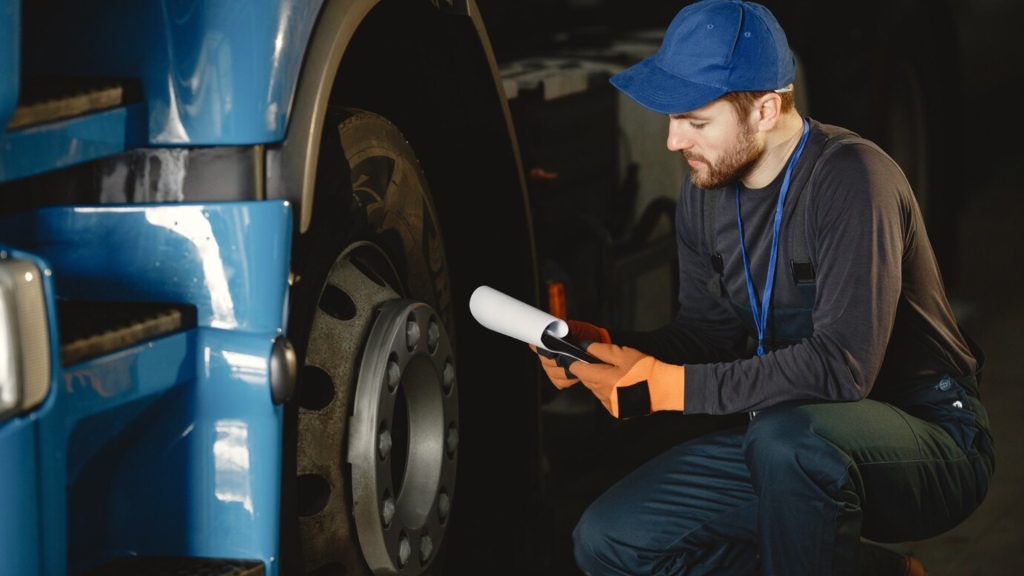Automatic truck washes are a popular, time-saving solution for keeping large commercial vehicles clean and professional-looking. But here’s the dirty truth — while they’re efficient, these machines can sometimes do more harm than good. From scratched paint to damaged mirrors and antennas, a poorly maintained or overly aggressive wash system can cause costly damage. If you’re wondering how to keep your fleet looking sharp without sacrificing your truck’s health, you’re in the right place.
In this guide, we’ll walk you through proven tips to minimize damage from automatic truck washes, so your rig stays in top shape, your brand looks professional, and your maintenance costs stay low.
1. Understanding How Automatic Truck Washes Work
Before we dive into protection strategies, let’s talk mechanics. Automatic truck washes use high-pressure water jets, rotating brushes, and chemical detergents to remove dirt, grime, and road salt. While this seems harmless, the combination of mechanical action and chemicals can be problematic when equipment is not calibrated or maintained properly.
Some systems use touchless technology, relying solely on water and detergents, while others use friction-based brushes that physically scrub the vehicle’s surface. Each has pros and cons in terms of cleaning efficiency and risk of damage.
2. Common Types of Damage from Automatic Truck Washes
Automatic washes can cause a surprising range of issues if you’re not careful. Here are some common damages truck owners report:
- Paint Scratches and Swirls from abrasive brushes
- Mirror and Antenna Breakage due to poorly aligned brushes or strong water jets
- Decal and Wrap Peeling from harsh chemicals or mechanical force
- Corrosion due to lingering moisture in hidden areas
- Sensor Damage especially in modern trucks with ADAS (Advanced Driver Assistance Systems)
Understanding what can go wrong is the first step in protecting your investment.
3. Choose the Right Type of Truck Wash
Not all truck washes are created equal. To minimize damage, opt for touchless washes whenever possible. Touchless systems are less likely to scratch surfaces since they rely on water and detergents, not brushes. While they may not clean as thoroughly, they’re gentler on paint, mirrors, and other sensitive parts.
If you must use a brush-based system, ensure the wash facility maintains and replaces brushes regularly. Worn-out brushes often trap grit and dirt, turning them into scratching machines.
4. Inspect the Wash Facility
Before driving your rig into a wash bay, do a quick inspection. Look for signs of poor maintenance like:
- Dirty, frayed brushes
- Leaking equipment
- Puddles or mud around the wash area
- Reviews or reports from other drivers
A well-maintained facility is less likely to cause damage. Don’t hesitate to ask questions or request a tour. It’s your truck — protect it.
5. Prep Your Truck Before Washing
Preparation is key to reducing damage risk. Before entering the wash:
- Secure or remove loose items like antennas or side mirrors, if possible
- Fold in mirrors to prevent snapping or bending
- Cover sensitive electronics or exposed wiring
- Inspect for existing damage so you can tell if the wash caused new issues
Taking five minutes to prep can save hundreds in repair costs.
6. Use Protective Coatings and Waxes
Applying a protective wax or ceramic coating to your truck’s surface can make a huge difference. These coatings form a barrier between your paint and the world, reducing the risk of scratches and making dirt easier to remove.
Benefits include:
- Enhanced shine and professional appearance
- Easier cleaning
- Increased resistance to chemical damage
- Protection from UV rays and corrosion
While it requires a bit of upfront investment, the long-term protection pays off.
7. Consider Manual Washing as an Alternative
Let’s face it — automatic washes aren’t always the best choice. When possible, opt for manual washing with soft cloths and truck-safe detergents. This method allows for greater control and targeted cleaning without the risks of harsh brushes or chemicals.
If you don’t have time to do it yourself, look for a professional truck detailer who offers hand washes. This might cost more than an automatic wash, but it reduces wear and tear on your truck’s exterior.
8. Inspect Your Truck After Each Wash
Post-wash inspections can catch damage early before it becomes a bigger problem. After each automatic wash, take a few minutes to:
- Check for new scratches, dings, or chipped paint
- Inspect mirrors, lights, and other attachments
- Look for peeling decals or signs of corrosion
- Test sensors and cameras if your truck has them
Catching issues early helps with maintenance planning and may allow you to hold the wash facility accountable if damage occurred.
9. Use Wash Facilities with Truck-Specific Systems
Not all washes are designed for the size and complexity of commercial trucks. Choose facilities that specialize in truck washing, with equipment scaled for larger vehicles, more robust safety features, and proper clearance.
Truck-specific washes often have gentler cleaning cycles, wider bays, and staff experienced in handling big rigs, which reduces the risk of accidental damage.
10. Educate Your Drivers and Team
If you manage a fleet, educating your drivers about safe washing practices is critical. Provide a checklist for truck prep, recommend preferred wash locations, and stress the importance of inspection before and after washing.
Your team can be your first line of defense against unnecessary damage, saving your business money and downtime.
Conclusion: Protect Your Truck, Protect Your Investment
Keeping your truck clean doesn’t have to come at the cost of expensive repairs or downtime. By understanding how automatic washes work, choosing the right facilities, preparing your vehicle, and conducting regular inspections, you can minimize damage and keep your rig looking sharp for the long haul.
Remember, your truck is more than just a vehicle — it’s a rolling billboard for your business. Taking steps to protect it from the hidden risks of automatic washes is a smart investment in your brand and your bottom line.
Stay proactive, stay informed, and drive clean — without damage.

